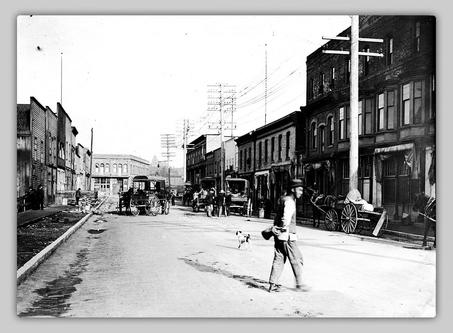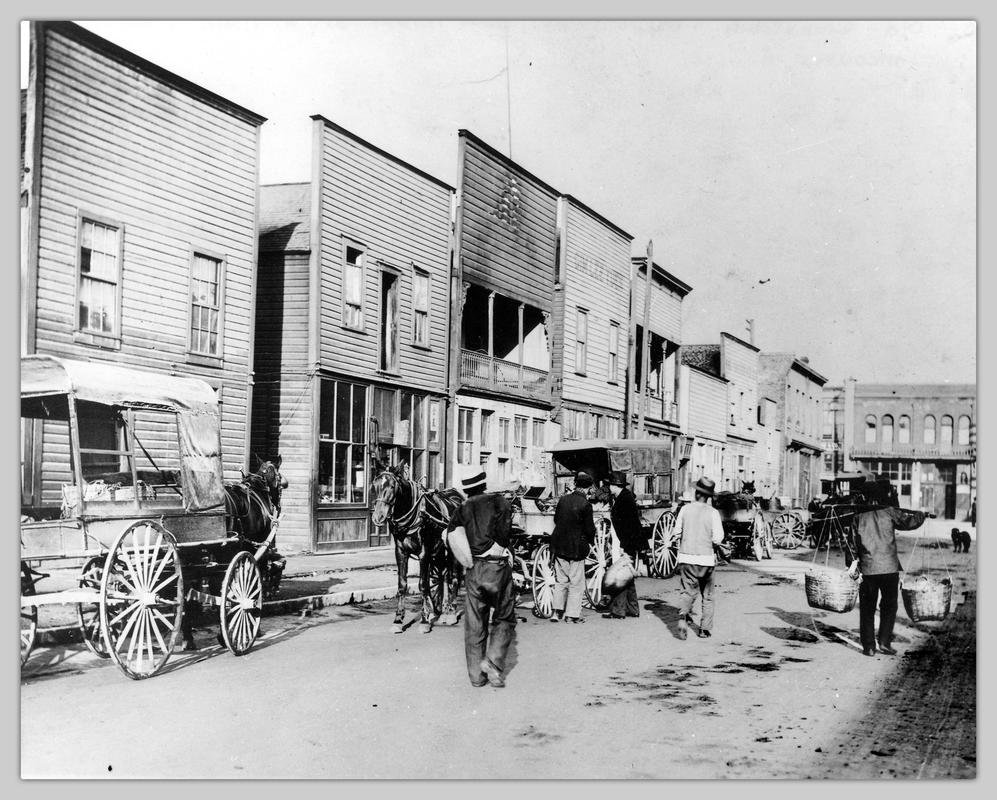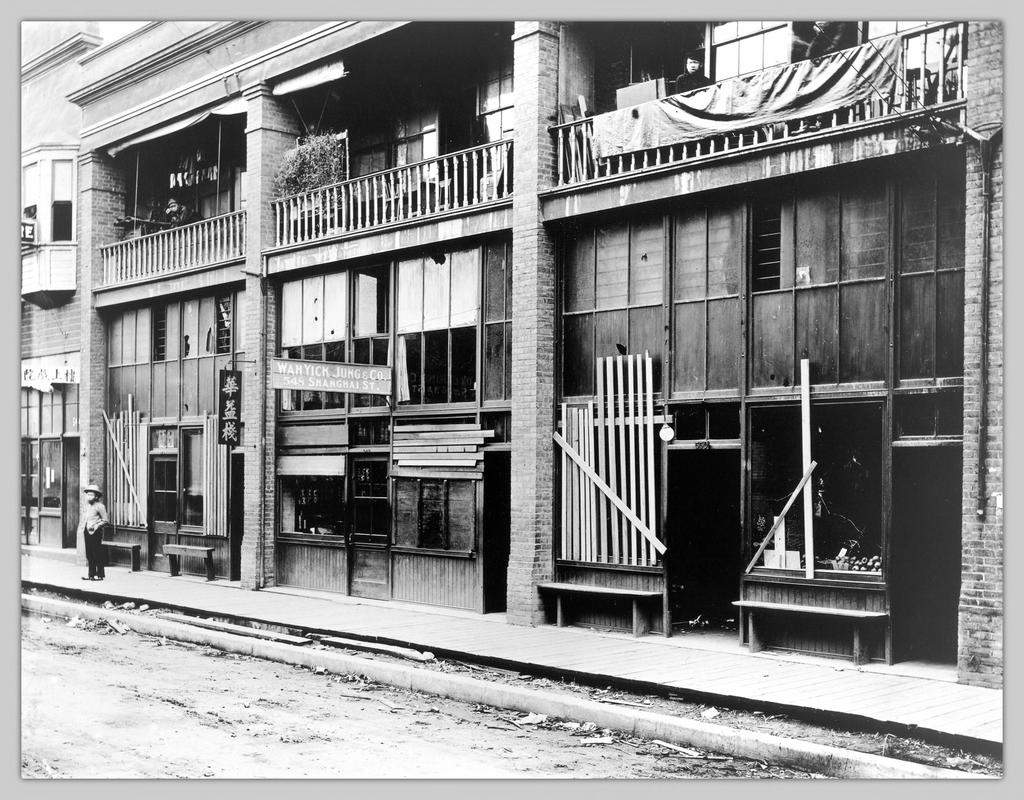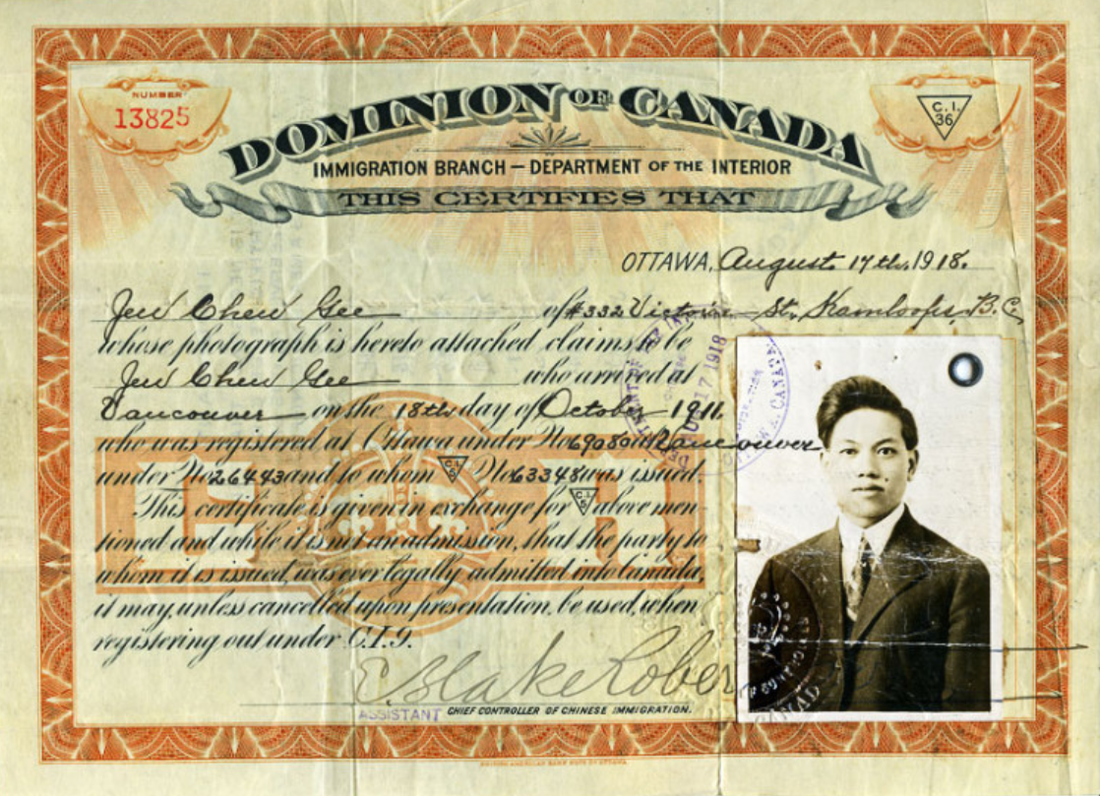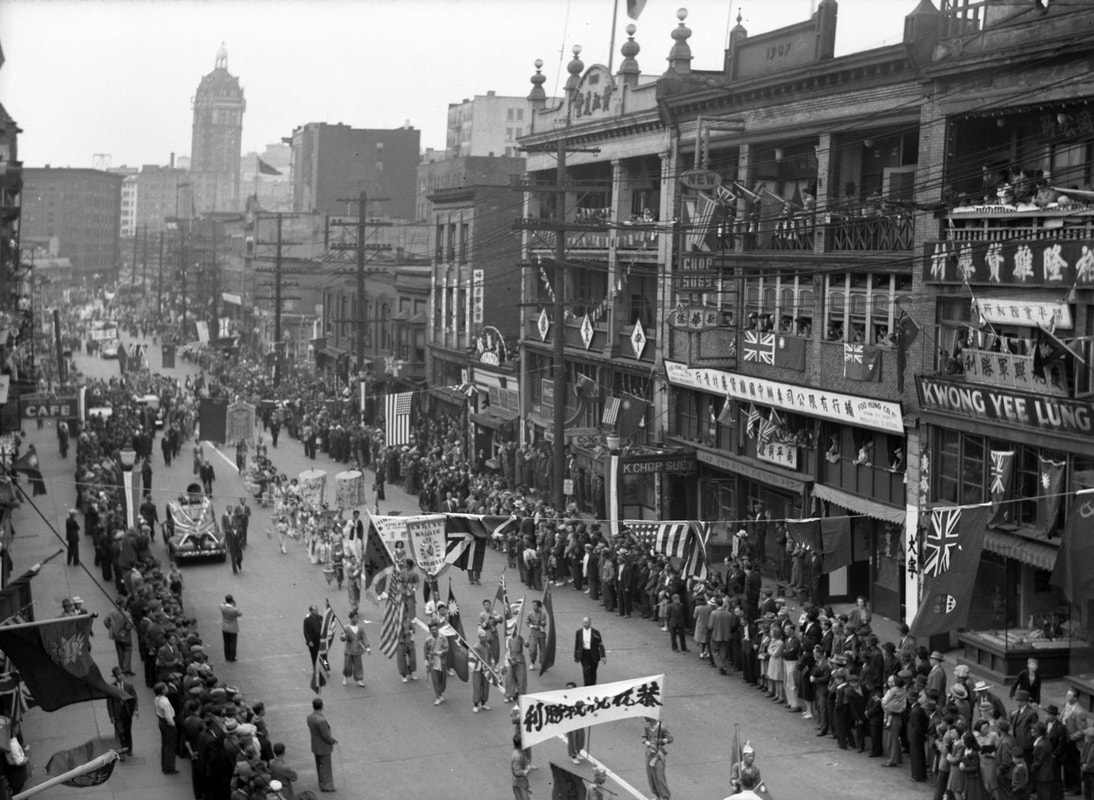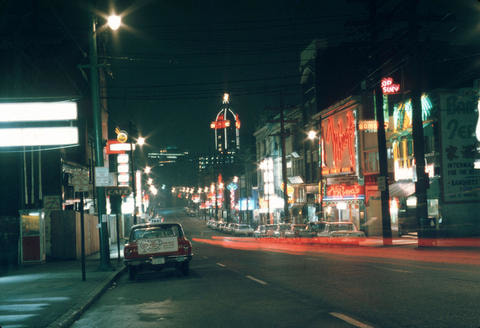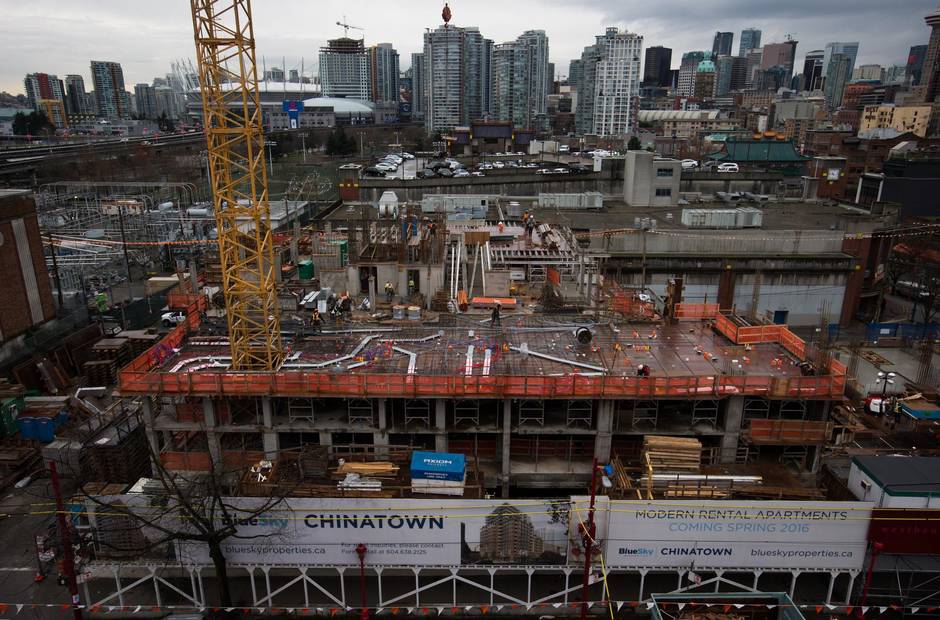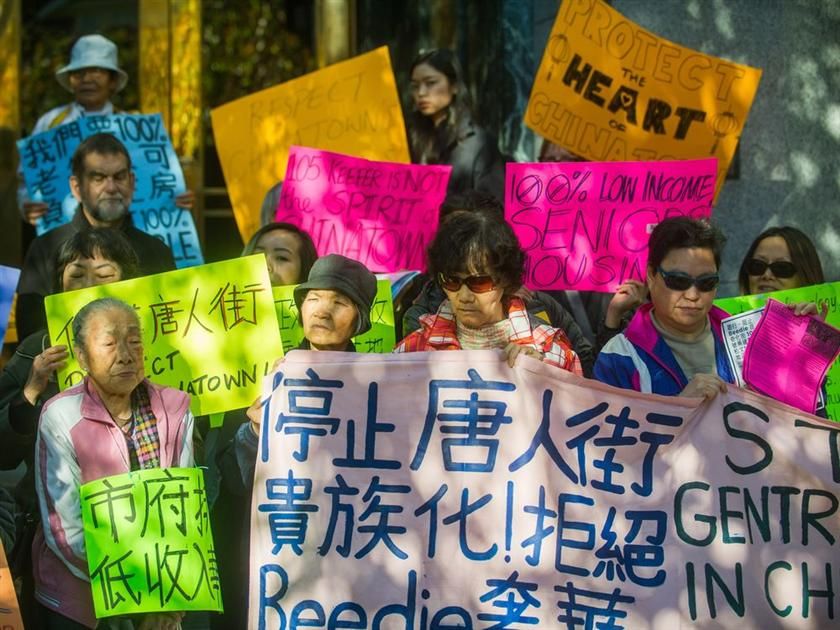|
|
EARLY BEGINNINGSThe first Chinese settlers arrived in Vancouver in the late 1850s, with hopes of finding better opportunities. While the Chinese did thrive, other residents of Vancouver at the time were not so happy about that.
1885 - The federal Chinese Immigration Act is passed. Any Chinese looking to immigrate to Canada must now pay a $50 head tax. 1886 - Chinatown is born, and approximately ninety Chinese residents call Chinatown home. Many of them are living along Carrall and Dupont (later East Pender) Streets. 1890 - The population of Vancouver's Chinatown increased to over one thousand residents. 1895 - The Chinese Benevolent Association of Vancouver is founded, with the headquarters built on Dupont Street. 1900 - The Chinese Head Tax increased to $100. 1903 - The Chinese Head Tax was increased again to $500. 1904 - Construction in Chinatown creates new space for the Chinese to live in. These areas came to be known as Shanghai Alley and Canton Alley. Chinese businesses began to thrive. |
|
|
EXCLUSION, FEAR, & RACE RIOTSVancouver residents went to great lengths to show the Chinese who was in charge.
1907 - On September 7, 1907, the Asiatic Exclusion League marched through Chinatown, smashing business windows, looting stores, and beating up Chinese. 1910 - Despite the riots, Chinatown thrived and grew into about four city blocks. 1911 - Chinatown's population continues to grow, with its numbers growing to about 3,560 and becoming the largest Chinatown in Canada. 1914-1918 - Approximately 200 Chinese volunteered for the Canadian military during World War I. 1920 - Chinatown's population booms and infrastructure grows. There are now theatres, a library, schools, and hospitals. 1923 - The Chinese Exclusion Act is passed, effectively prohibiting any more Chinese from immigrating into Canada. 1936 - A gate is erected at Pender Street and Carrall Street. That site is currently occupied by the Chinese Cultural Centre. 1939-1945 - More Chinese volunteered to fight in the Canadian army, this time in World War II. During this time, due to the Chinese Exclusion Act and the Depression, the Chinese population drops from ~13,000 to ~7,100. |
|
|
|
THE MODERN AGE & GENTRIFICATION CRISISWith a new generation already forging their own path, Vancouver's Chinatown has changed significantly.
2000 - The Downtown Eastside Community Development Project through the National Crime Prevention Centre. 2001 - The Vancouver Chinatown Revitalization Committee is formed to help revitalize Chinatown. 2005-2008 - The Three Year action plan for Chinatown's revitalization project. 2009-2012 - The Historic Area Height Review is completed. A 3-Year Economic Revitalization Strategy is also developed. 2011 - The first proposal for the redevelopment of 105 Keefer Street. 2015-2017 - Widespread displacement of Chinatown residents come about due to gentrification and redevelopment. The development at 105 Keefer Street, though hotly contested, was denied multiple times. |
